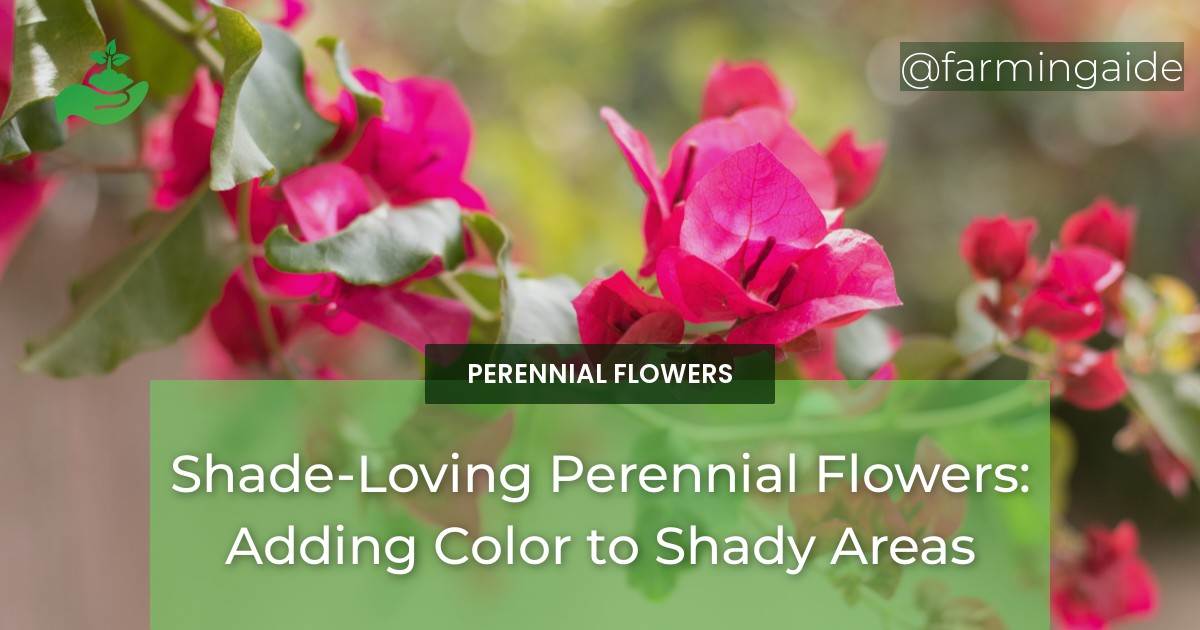If you have a garden with shady areas, you might think that it’s impossible to grow colorful and vibrant flowers. However, there are plenty of shade-loving perennial flowers that can add beauty and interest to those darker corners of your yard. In this article, we’ll dive into the best perennial flowers for shaded areas, their characteristics, and tips for growing them successfully. Whether you’re looking for a pop of color or a lush greenery, there’s a shade-loving perennial flower that can fit the bill.
Best Perennial Flowers for Shaded Areas
Bleeding Heart (Dicentra spectabilis)
Bleeding Heart is one of the most iconic shade-loving perennial flowers, known for its heart-shaped pink or white flowers that bloom in the spring. This plant prefers moist, well-drained soil and partial to full shade. It’s a low-maintenance plant that can grow up to 2-3 feet tall.
Astilbe (Astilbe spp.)
Astilbe is another classic shade-loving perennial flower that produces plume-like flowers in shades of white, pink, and red. Astilbe prefers consistently moist soil and partial to full shade. Depending on the variety, it can grow up to 2-5 feet tall.
Ferns (Dryopteris spp.)
Ferns are a versatile group of plants that thrive in shade and add lush greenery to your garden. There are many varieties of ferns, from the delicate Maidenhair Fern to the larger and bolder Japanese Painted Fern. Ferns prefer moist, well-drained soil and partial to full shade.
Hostas (Hosta spp.)
Hostas are another popular shade-loving perennial plant that comes in a range of sizes and colors. Some hostas produce white or purple flowers, but their foliage is the real star of the show. Hostas prefer moist, well-drained soil and partial to full shade.
Heuchera (Heuchera spp.)
Heuchera, also known as Coral Bells, are shade-loving perennial flowers with striking foliage in shades of green, purple, and bronze. Some varieties also produce delicate flowers in pink, red, or white. Heuchera prefers well-drained soil and partial to full shade.
Lenten Rose (Helleborus spp.)
Lenten Rose is a shade-loving perennial flower that blooms in late winter or early spring, producing flowers in shades of white, pink, purple, or green. These plants prefer well-drained soil and partial to full shade.
Foamflower (Tiarella spp.)
Foamflower is a shade-loving perennial flower that produces delicate white or pink flowers in the spring. Its foliage is also attractive, with leaves that can range from green to purple. Foamflower prefers moist, well-drained soil and partial to full shade.
Characteristics of Shade-Loving Perennial Flowers
Tolerant to Shade
Shade-loving perennial flowers are able to thrive in areas with less sunlight, making them ideal for gardens with shaded areas or areas with light filtering through tall trees or buildings.
Low Maintenance
Many shade-loving perennial flowers are low-maintenance, requiring little intervention from gardeners once established. They also tend to be resistant to pests and diseases.
Long-Lasting Blooms
Shade-loving perennial flowers can produce blooms for several weeks or even months, providing long-lasting color and beauty to your garden.
Versatile
Shade-loving perennial flowers come in a wide variety of sizes, colors, and shapes, making them a versatile addition to any garden. They can be used as a groundcover, border plant, or accent plant.
ALSO READ
Tips for Growing Shade-Loving Perennials
Choosing the Right Location
When planting shade-loving perennial flowers, it’s important to choose a location that receives the right amount of sunlight. Partial to full shade is ideal, as too much sunlight can damage the plants.
Preparing the Soil
Shade-loving perennial flowers prefer moist, well-drained soil that’s rich in organic matter. Before planting, amend the soil with compost or aged manure to improve its quality.
Watering and Fertilizing
Shade-loving perennial flowers require consistent moisture, so be sure to water them regularly. Fertilize them with a balanced fertilizer in the spring and again in the summer.
Pruning and Deadheading
Deadhead spent blooms to encourage new growth and remove any dead or damaged foliage to keep the plant healthy.
Dividing and Transplanting
Shade-loving perennial flowers can be divided and transplanted every few years to keep them healthy and vigorous. Divide them in the early spring or fall, and be sure to plant the new divisions at the same depth as the original plants.
Can Shade-Loving Perennial Flowers Survive Winter and Frost?
Yes, shade-loving perennial flowers can survive winter and frost with proper care in protecting perennial flowers from frost. Providing mulch, covering them with cloths, or relocating them to more sheltered areas can help them withstand low temperatures. Choosing frost-resistant varieties is also crucial for their survival.
Conclusion
Shade-loving perennial flowers are a great way to add color and interest to your garden’s shaded areas. With so many varieties to choose from, you’re sure to find the perfect plant for your needs. By following a few simple tips for growing and caring for shade-loving perennials, you can enjoy their beauty for years to come.


